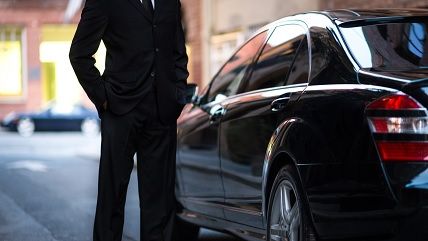From Regulating Uber to Subsidizing It
Not waiting for Uber to stop moving before subsidizing it.

On March 21, the Orlando suburb Altamonte Springs is starting a pilot program that pays for part of riders' Uber fares. This misguided year-long initiative has a budget of $500,000 and will cover 20 percent of each fare for rides within the city's limits and 25 percent of each fare for rides that start or end at mass transit stations.
Altamonte Springs is not alone in its push to subsidize Uber. Pinellas County in the Tampa Bay area just started a pilot program that pays up to $3 per trip to riders who take Ubers or taxis to bus stops. While the intentions behind both of these localities' subsidies are to increase access to government-provided transportation, subsidizing Uber—and taxis—is an expensive, pointless, and distortionary mistake.
University of Chicago economics professor Casey Mulligan told me, "A subsidy creates two prices: one that riders pay and the other that Uber receives." In other words, though consumers may see a lower price, the difference between the discounted price and the full cost of a ride must be paid by someone (usually taxpayers). Additionally, subsidies push prices up by making it appear that prices are lower and artificially raising demand (see the cases of subsidies for student loans, sugar, film, and professional sports stadiums, just to name a few). These effects could lead to an outcome that simply transfers funds from taxpayers to Uber, with little effect on riders' fares.
Yet, support for Uber subsidies continues to grow. This is likely because the so-called "last mile" problem of how to get to and from a mass transit system has plagued mass transit since its inception, leaving many residents underserved by existing options. Ridesharing has the potential to solve this problem, and proponents of subsidies argue that paying for Uber rides is the most cost-effective solution.
Uber has already helped to solve the last mile problem—without any taxpayer assistance. Last year, Uber released a case study of its effects on Chicago's mass transit system. The study found that, "Chicago's public transit system provides frequent, efficient, and convenient service across the city, but it only goes so far. Uber offers residents of areas underserved by public transit a reliable and fast link to public transportation, effectively expanding the coverage of existing transit networks."
This experience is not unique to Chicago. Out of all the Uber trips in Portland in February 2015, 25 percent started or ended within a quarter mile of a mass transit station. A similar trend was seen in Austin during a summer 2015 analysis of the city's Uber trips.
Additionally, because Uber is a reliable form of transportation at all hours of the day, more people can take mass transit without worrying about how they will get home later in the evening.
Uber already has partnerships with government transportation agencies in cities such as Atlanta, Dallas, and Los Angeles. The point of these partnerships is to create greater integration between government transit systems and Uber by coordinating the systems' and Uber's apps. Similarly, TransLoc, a transportation technology company, started government transit integration programs with Uber in Memphis and Raleigh-Durham last month. Clearly greater mass transit access is achievable without Uber subsidies.
Other important questions over localities' subsidizing Uber still exist. Lyft, Uber's largest competitor, is currently in subsidy negotiations with government transit agencies, but what about future or smaller competitors? If subsidies fail to apply evenly across an industry, new, smaller firms that already face barriers to success must also compete with government funding for their larger competitors. Similarly, Altamonte Springs' program provides subsidies to Uber but not taxis, which makes it even harder for taxis to remain competitive.
Since Uber entered the market, its prices have steadily declined. Lyft's prices have done the same. This stands in stark contrast to the heavily-regulated taxi industry, in which prices rarely (if ever) fall and are often determined by government commissions. Expanding shared ride options such as UberPOOL and LyftLine have already driven down the costs of for-hire vehicle transportation, and this trend will only continue as the services attract more riders. Using these services I can make the two-and-a-half mile trip across Washington, DC from my home to work for just over $6, even during rush hour.
After winning policy battles across the country, ridesharing has been able to expand in most areas relatively free of burdensome regulations. During this impressive expansion, competition and innovation have driven down the cost of rides. If policymakers want to ensure that residents have convenient and affordable access to government transit systems, all they have to do is resist the urge to stifle the growing industry through over-regulation.
While integrating with government agencies to increase transportation systems' efficiency is a welcome next step for Uber and its competitors, accepting subsidies sets ridesharing down a dangerous road. Reliance on government funds would allow some to argue for mandatory handicap accessibility and more burdensome labor regulation. New York City is already exploring these requirements. More important, an industry that is consistently applauded for its real-world example of the power of innovation and the dangers of government intervention and special treatment risks losing that reputation by advocating for government handouts.
Ridesharing has aided mass transit by increasing access and helping to alleviate the last mile problem. This much should be celebrated. But the case for Uber subsidies is weak at best and yet another case of government playing favorites at worst.


Show Comments (21)